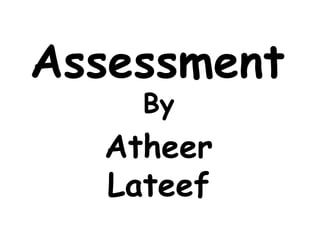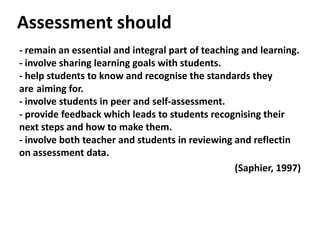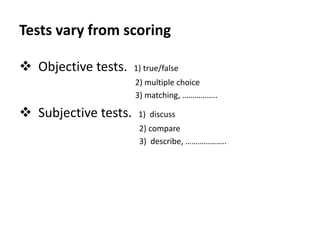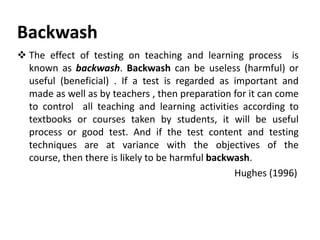Assessment refers to monitoring learners' progress and includes formative and summative evaluations. Formative assessment provides feedback during learning, while summative assessment measures achievement at the end. Alternative assessments evaluate students through methods like portfolios, journals, and self-assessment rather than traditional tests. Effective assessment involves learners, communicates goals, and provides feedback to improve learning. Tests are one form of assessment but must be carefully designed, administered, and interpreted to avoid harmful impacts on teaching.




























